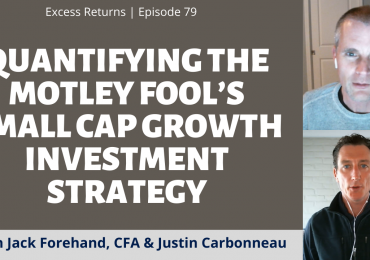Every other issue of The Validea Hot List newsletter examines in detail one of John Reese’s computerized Guru Strategies. This latest issue looks at the Martin Zweig-inspired strategy, which has averaged annual returns of 8.4% since its July 2003 inception vs. 4.7% for the S&P 500. Below is an excerpt from the newsletter, along with several top-scoring stock ideas from the Zweig-based investment strategy.
Taken from the March 29, 2013 issue of The Validea Hot List
Today’s Guru Spotlight is a bittersweet one. While it’s always interesting and worthwhile to examine the great Martin Zweig’s approach, we’re also commemorating the recent passing of the investment guru, who died in February at the age of 70.
Zweig was an intriguing character known for putting his fortune to use in some pretty fun, flashy ways. He owned what Forbes reported was the most expensive apartment in New York City, a penthouse atop Manhattan’s Pierre Hotel that was at one time valued at more than $70 million. He was also an avid collector of a variety of different kinds of memorabilia. The Wall Street Journal has reported that he owned such one-of-a-kind items as Buddy Holly’s guitar, the gun from Dirty Harry, the motorcycle from Easy Rider, and Michael Jordan’s jersey from his rookie season with the Chicago Bulls. (Zweig also used his money for some very noble purposes — in 2011, he and his wife, Barbara, pledged $5 million gift to Mount Sinai Hospital, which went toward the Zweig Family Center for Living Donation, a facility that focuses on providing medical, surgical, and psychological care to living organ donors.)
Zweig became well known back in the 1980s as a frequent guest on PBS’s Wall $treet Week with Louis Rukeyser, where he famously called the 1987 market crash. Just one trading day before the crash, he said he expected “a brief decline, but a vicious one” that would be similar to the 1929 crash. Stocks tumbled more than 20% on “Black Monday”, but — just as he predicted — made a quick comeback, reaching pre-crash levels in just about a year.
Zweig was a growth investor, and his methodology was dominated by earnings-based criteria. He looked at a stock’s earnings from a myriad of angles, wanting to ensure that he was getting stocks that had been producing strong growth over the long haul and even better growth recently — and he wanted their growth to be coming from the right sources.
Zweig’s thoroughness paid off. His Zweig Forecast was one of the most highly regarded investment newsletters in the country, ranking number one for risk-adjusted returns during the 15 years that Hulbert Financial Digest monitored it. It produced an impressive 15.9% annualized return during that time. Zweig also managed several mutual funds, and was co-founder of Zweig Dimenna Partners, a multibillion-dollar New York-based firm that has been ranked in the top 15 of Barron’s list of the most successful hedge funds.
A Serious Strategy
Zweig may have spent his cash on some flashy, fun items, but the strategy he used to compile that cash was a disciplined, methodical approach. His earnings examination of a firm spanned several categories, and I’ve incorporated them into the Zweig-inspired model I base on his book, Winning on Wall Street. They include:
Trend of Earnings: Earnings should be higher in the current quarter than they were a year ago in the same quarter.
Earnings Persistence: Earnings per share should have increased in each year of the past five-year period; EPS should also have grown in each of the past four quarters (vs. the respective year-ago quarters).
Long-Term Growth: EPS should be growing by at least 15% over the long term; a growth rate over 30% is exceptional.
Earnings Acceleration: EPS growth for the current quarter (vs. the same quarter last year) should be greater than the average growth for the previous three quarters (vs. the respective three quarters from a year ago). EPS growth in the current quarter also should be greater than the long-term growth rate. These criteria made sure that Zweig wasn’t getting in late on a stock that had great long-term growth numbers, but which was coming to the end of its growth run.
While Zweig’s EPS focus certainly put him on the “growth” side of the growth/value spectrum, his approach was by no means a growth-at-all-costs strategy. Like all of the gurus I follow, he included a key value-based component in his method. He made sure that a stock’s price/earnings ratio was no greater than three times the market average, and no greater than 43, regardless of what the market average was. (He also didn’t like stocks with P/Es less than 5, because they could be indicative of an outright dog that investors were wisely avoiding.)
In addition, Zweig wanted to know that a firm’s earnings growth was sustainable over the long haul. And that meant that the growth was coming primarily from sales — not cost-cutting or other non-sales measures. My Zweig model requires a firm’s revenue growth to be at least 85% of EPS growth. If a stock fails that test but its revenues are growing by at least 30% a year, it passes, however, since that is still a very strong revenue growth rate.
Like earnings growth, Zweig believed sales growth should be increasing. My model thus requires that a stock’s sales growth for the most recent quarter (vs. the year-ago quarter) to be greater than the previous quarter’s sales growth rate (vs. the year-ago quarter).
Finally, Zweig also wanted to makes sure a firm’s growth wasn’t driven by unsustainable amounts of leverage (a key observation given all that’s happened in recent years). Realizing that different industries require different debt loads, he looked for stocks whose debt/equity ratios were lower than their industry average.
Macro Issues
There’s one more thing you should know about Zweig. He relied a good amount on technical factors to adjust how much of his portfolio he put into stocks, and the indicators he used are quite relevant given today’s environment. Some included the Federal Reserve’s discount rate; installment debt levels; and the prime rate. His mottos included “Don’t fight the Fed” (meaning investors should be more bullish when interest rates were low or falling) and “Don’t fight the tape” (which related to his practice of getting more bullish or bearish based on market trends).
Those rules are tough for an individual investor to put into practice; Zweig used what he called a “Super Model” that meshed all of his indicators into a system that determined how bullish or bearish he was. But over the years, I’ve found that using only the quantitative, fundamental-based criteria Zweig outlined in his book can produce very strong results. My Zweig-inspired 10-stock portfolio has been a very strong performer since its July 2003 inception, returning 118.6%, or 8.4% per year, while the S&P 500 has gained just 56.3%, or 4.7% per year (through March 26). The portfolio is having a strong start to 2013, already up nearly 15%. It tends to choose stocks from a variety of areas — it goes where the growth is. Here are the portfolio’s current holdings:
USANA Health Sciences (USNA)
Sturm, Ruger & Company (RGR)
Lululemon Athletica (LULU)
World Acceptance Corp. (WRLD)
First Cash Financial Services (FCFS)
The TJX Companies (TJX)
Netease, Inc. (NTES)
Questcor Pharmaceuticals (QCOR)
Oracle Corporation (ORCL)
V.F. Corporation (VFC)
What I really like about the Zweig strategy is that, while it certainly would qualify as a growth approach, it doesn’t look at growth in a vacuum. As you’ve seen, it examines earnings growth from a variety of angles, making sure that it is strong, improving, and sustainable. In doing so, it allows you to find some fast-growing growth stocks that are not paper tigers, but instead solid prospects for continued long-term success.







